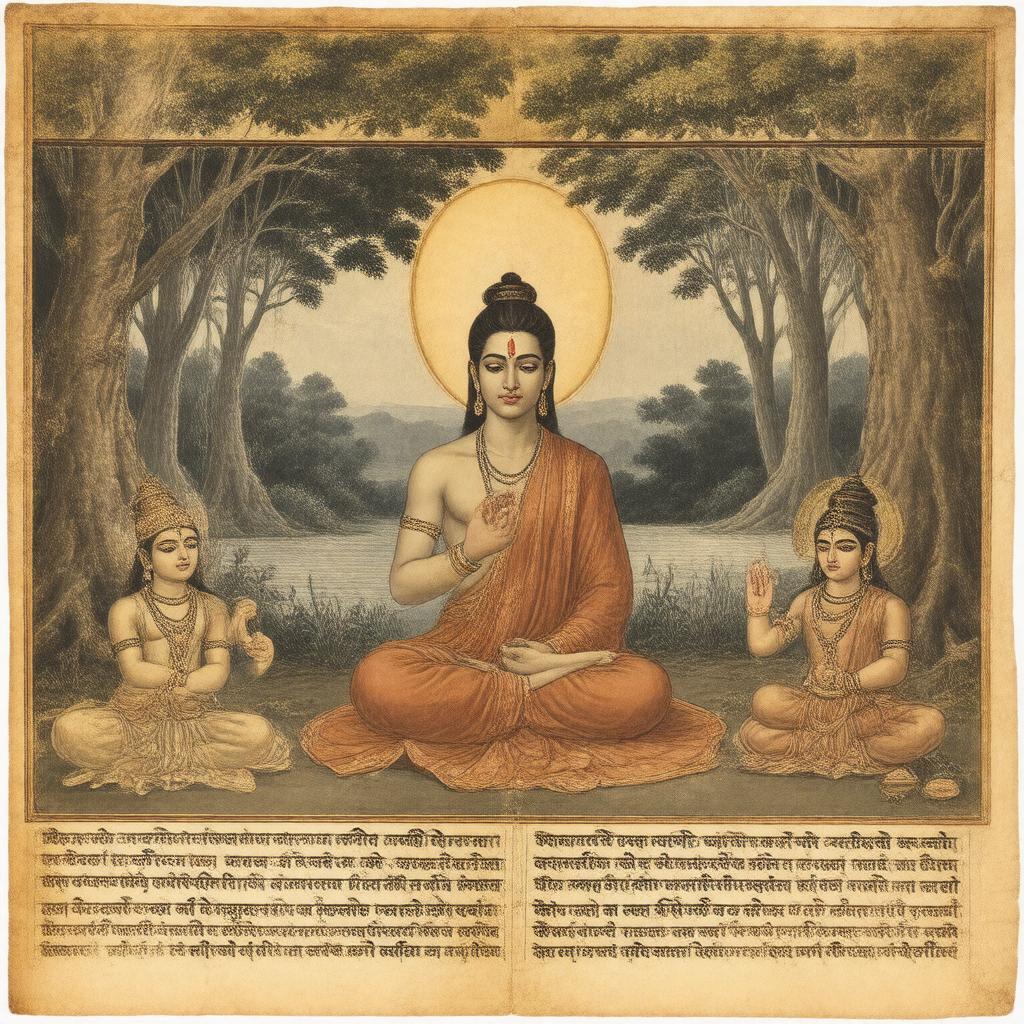Prompt
"An ancient Indian manuscript page with yellowed parchment, written in Sanskrit script, depicting a serene forest scene with a meditating sage, possibly Svetasvatara, surrounded by intricate illustrations of Om, Rudra, and Shiva, conveying a sense of spiritual unity and self-realization, in a traditional Indian art style, such as miniature painting or illumination, with earthy tones and subtle ink textures."

